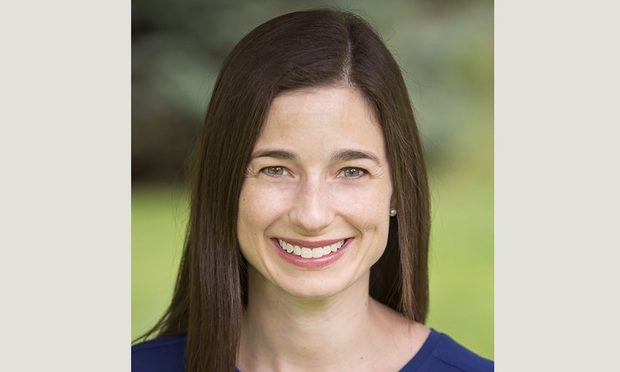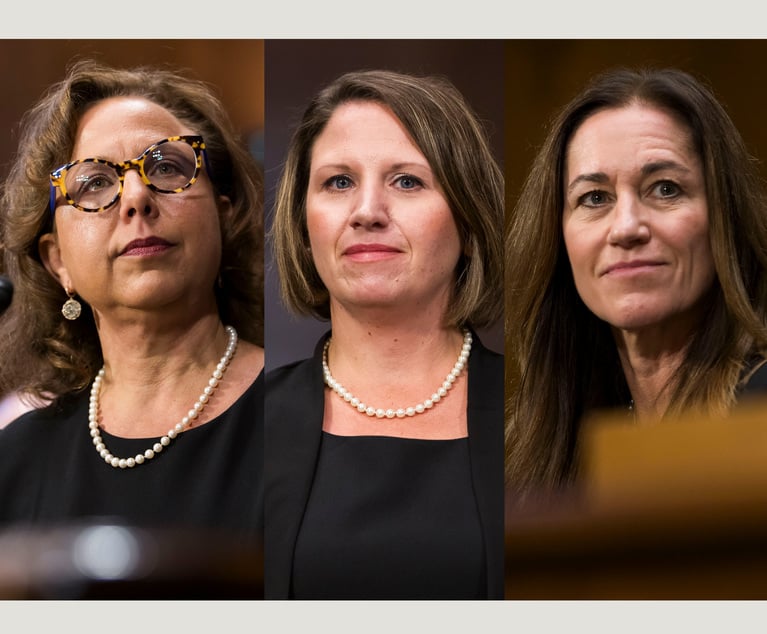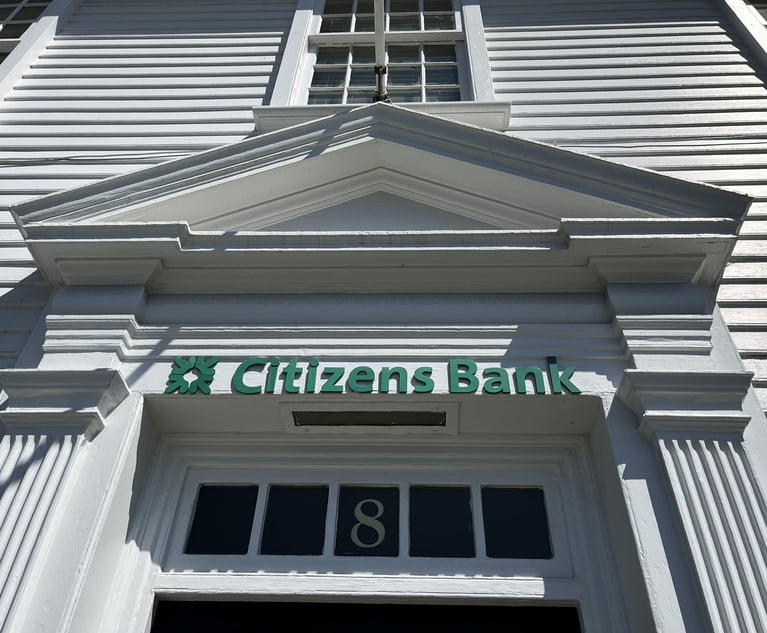Lack of State Funding Pushes Districts to Financial Precipice
According to a recent report published by the Center on Regional Politics at Temple University, Pennsylvania is becoming permanently divided between have and have-not districts.
July 19, 2019 at 12:00 PM
7 minute read
 Deborah Gordon Klehr, executive director of Education Law Center (Photo: Courtesy Photo)
Deborah Gordon Klehr, executive director of Education Law Center (Photo: Courtesy Photo)
The Pennsylvania legislature and Gov. Tom Wolf recently enacted a state budget that added $160 million to basic education funding for school districts, a modest 2.6% increase, and added $50 million to special education funding, a more substantial increase of 4.4%. The budget also includes some welcome increases in state funding for early childhood programs.
Unfortunately, despite some congratulatory rhetoric from legislators, the approved state budget did little to change the overall dismal picture of school funding in Pennsylvania. According to a recent report published by the Center on Regional Politics at Temple University, Pennsylvania is becoming permanently divided between have and have-not districts. The report warned that Pennsylvania's education funding system is creating a “persistent gulf” between districts with surpluses and districts with shortfalls.
The findings from this report confirm what plaintiffs in an active school funding case have known for years: Pennsylvania's schools are defined by entrenched and deepening inequities, and children residing in underfunded school districts are deprived of educational opportunities. The petitioner school districts, parents and statewide organizations in William Penn School District v. Pennsylvania Department of Education, contend that school funding in Pennsylvania is both inadequate and inequitable. As a result of deficient state funding, children in “have-not” districts are deprived of their right to the quality education guaranteed to them by the state constitution, and there is no legitimate state purpose justifying such gross disparities between school districts. The Education Law Center, along with Public Interest Law Center and law firm O'Melveny & Myers, represents petitioners in the case. As we get ready for a likely trial date in 2020, evidence against the state is mounting.
In the United States, inequities in school funding are inextricably linked to the degree to which school districts must rely on local revenue sources. The more dependent districts are on local funding, the greater the inequality among districts. With Pennsylvania ranking 44th out of 50 states for the small percentage of state funding it provides to schools, inequality between districts in the state looms large. The latest census data show that Pennsylvania contributes only 39% of the total cost of K-12 schooling. That is exactly where the state share sat eight years ago. By contrast, on average, in states across the United States, more than 47% of school funding comes from the state.
In 2016, Pennsylvania took a step toward addressing inequities by adopting a fair funding formula for state basic education dollars that drives more funding to districts and student populations that need more support. But a formula is only as good as the money sent through it, and the dollars currently allocated are utterly inadequate to help underfunded districts meet the needs of their students or even to keep up with state-mandated increases in expenses. Moreover, the formula only applies to new money, leaving nearly 90% of basic education funding distributed without consideration of district and student need.
Meanwhile, the cost of schooling has continued to increase dramatically, exacerbating the dire financial picture for many Pennsylvania schools. Have-not districts are staring down the barrel of permanent deficits as increases in expenses outpace increases in state and local funding. School boards in less affluent communities are forced to ratchet up property tax rates but simply don't have the capacity to plug the gaps. Students, teachers and administrators have been experiencing the effects of this.
In an annual survey from last year, administrators reported that to balance their budgets, they had to eliminate athletic programs, field trips and other educationally enriching activities. School leaders also had to delay maintenance to leaky roofs, as well as defer much-needed upgrades to heating and cooling systems. In affidavits submitted in the William Penn case, school district administrators and parents note that students have suffered due to overcrowded classrooms, lack of remedial resources and technology, and poor school facilities.
School leaders have had to increase class sizes and let go of staff. In the Lancaster School District, another plaintiff in the William Penn lawsuit, about 100 teaching and administrative positions were cut in 2011. Despite the complex needs of a growing number of immigrant and refugee children, Lancaster is being forced to educate its students with fewer personnel. School leaders in have-not districts across Pennsylvania have found it difficult to fill teacher vacancies as barebone budgets have driven away would-be educators.
School leaders have also reported having to make difficult choices between dropping electives and forgoing the purchase of new textbooks. In the William Penn School District, a plaintiff in the case, children cannot bring textbooks home because they are in such short supply. A Philadelphia parent petitioner in the case attested that her son never received remedial help despite not reaching proficiency in math for four straight years. He too is not allowed to bring books home. These stories illustrate the painful effects of chronic underfunding for school districts across the state.
And, according to the Temple report, the number of districts that are experiencing these financial struggles is between 300-375 annually—60-75% of all districts in Pennsylvania.
The structural deficits are largely due to years and years of inadequate state funding combined with rising costs in a few key areas, including expenses for charter schools, special education and contributions to the state retirement system—all now integral components of public education budgets.
Charter expenses complicate the picture because charter schools are the only major cost driver that has no dedicated state funding stream.
Running two parallel sets of school systems, one district-run and one made up of charters, comes with a hefty price tag. Charter costs used to be partially offset by a line item in the state budget that reimbursed districts for these costs—until it was removed in 2011. Since then, local districts have been footing the bill for the added costs of charters, except for a slight assist when the state adopted its need-based funding formula in 2016 (charter school enrollment is now one small factor in allocating new aid dollars from the state).
But there are simply not enough new dollars in state aid to meet district and student needs.
How inadequate are the increases in state support? The Temple study found that state subsidies cover only 19% of district expenditure increases, while local tax revenues pay for 81% of increased costs.
Local communities scramble to manage these growing expenses. Wealthy school districts are able to generate more local revenue to maintain the integrity of their educational programs. Poor districts have difficult choices to make: increase property taxes, enact deep cuts—or both.
As authors of the Temple report point out, Pennsylvania's problem of inequitable school funding is a “persistent, ongoing, and systemic crisis that will continue and worsen unless structural changes are made.”
This budget season has shown that Pennsylvania lawmakers continue to punt on the opportunity to prevent the further entrenchment of have and have-not districts. Thus petitioners in the William Penn case are asking the courts to compel state legislators to fulfill their constitutional duty to adequately and equitably fund schools.
Legislators must address funding deficiencies on several fronts. To remedy years of neglect and meet current needs, they must make a multi-year commitment to increasing state education aid—for basic education and special education. They must address special challenges such as the growing cost of charter schools. And all these investments must focus on the students and districts with the greatest needs. Thousands of Pennsylvania school children have been waiting far too long.
Deborah Gordon Klehr is executive director of the Education Law Center, a statewide nonprofit legal advocacy organization dedicated to ensuring access to quality public education for all children in Pennsylvania.
NOT FOR REPRINT
© 2025 ALM Global, LLC, All Rights Reserved. Request academic re-use from www.copyright.com. All other uses, submit a request to [email protected]. For more information visit Asset & Logo Licensing.
You Might Like
View All
Pa. Federal District Courts Reach Full Complement Following Latest Confirmation

The Defense Bar Is Feeling the Strain: Busy Med Mal Trial Schedules Might Be Phila.'s 'New Normal'
7 minute read
Federal Judge Allows Elderly Woman's Consumer Protection Suit to Proceed Against Citizens Bank
5 minute read
Judge Leaves Statute of Limitations Question in Injury Crash Suit for a Jury
4 minute readTrending Stories
- 1The Law Firm Disrupted: Scrutinizing the Elephant More Than the Mouse
- 2Inherent Diminished Value Damages Unavailable to 3rd-Party Claimants, Court Says
- 3Pa. Defense Firm Sued by Client Over Ex-Eagles Player's $43.5M Med Mal Win
- 4Losses Mount at Morris Manning, but Departing Ex-Chair Stays Bullish About His Old Firm's Future
- 5Zoom Faces Intellectual Property Suit Over AI-Based Augmented Video Conferencing
Who Got The Work
J. Brugh Lower of Gibbons has entered an appearance for industrial equipment supplier Devco Corporation in a pending trademark infringement lawsuit. The suit, accusing the defendant of selling knock-off Graco products, was filed Dec. 18 in New Jersey District Court by Rivkin Radler on behalf of Graco Inc. and Graco Minnesota. The case, assigned to U.S. District Judge Zahid N. Quraishi, is 3:24-cv-11294, Graco Inc. et al v. Devco Corporation.
Who Got The Work
Rebecca Maller-Stein and Kent A. Yalowitz of Arnold & Porter Kaye Scholer have entered their appearances for Hanaco Venture Capital and its executives, Lior Prosor and David Frankel, in a pending securities lawsuit. The action, filed on Dec. 24 in New York Southern District Court by Zell, Aron & Co. on behalf of Goldeneye Advisors, accuses the defendants of negligently and fraudulently managing the plaintiff's $1 million investment. The case, assigned to U.S. District Judge Vernon S. Broderick, is 1:24-cv-09918, Goldeneye Advisors, LLC v. Hanaco Venture Capital, Ltd. et al.
Who Got The Work
Attorneys from A&O Shearman has stepped in as defense counsel for Toronto-Dominion Bank and other defendants in a pending securities class action. The suit, filed Dec. 11 in New York Southern District Court by Bleichmar Fonti & Auld, accuses the defendants of concealing the bank's 'pervasive' deficiencies in regards to its compliance with the Bank Secrecy Act and the quality of its anti-money laundering controls. The case, assigned to U.S. District Judge Arun Subramanian, is 1:24-cv-09445, Gonzalez v. The Toronto-Dominion Bank et al.
Who Got The Work
Crown Castle International, a Pennsylvania company providing shared communications infrastructure, has turned to Luke D. Wolf of Gordon Rees Scully Mansukhani to fend off a pending breach-of-contract lawsuit. The court action, filed Nov. 25 in Michigan Eastern District Court by Hooper Hathaway PC on behalf of The Town Residences LLC, accuses Crown Castle of failing to transfer approximately $30,000 in utility payments from T-Mobile in breach of a roof-top lease and assignment agreement. The case, assigned to U.S. District Judge Susan K. Declercq, is 2:24-cv-13131, The Town Residences LLC v. T-Mobile US, Inc. et al.
Who Got The Work
Wilfred P. Coronato and Daniel M. Schwartz of McCarter & English have stepped in as defense counsel to Electrolux Home Products Inc. in a pending product liability lawsuit. The court action, filed Nov. 26 in New York Eastern District Court by Poulos Lopiccolo PC and Nagel Rice LLP on behalf of David Stern, alleges that the defendant's refrigerators’ drawers and shelving repeatedly break and fall apart within months after purchase. The case, assigned to U.S. District Judge Joan M. Azrack, is 2:24-cv-08204, Stern v. Electrolux Home Products, Inc.
Featured Firms
Law Offices of Gary Martin Hays & Associates, P.C.
(470) 294-1674
Law Offices of Mark E. Salomone
(857) 444-6468
Smith & Hassler
(713) 739-1250





